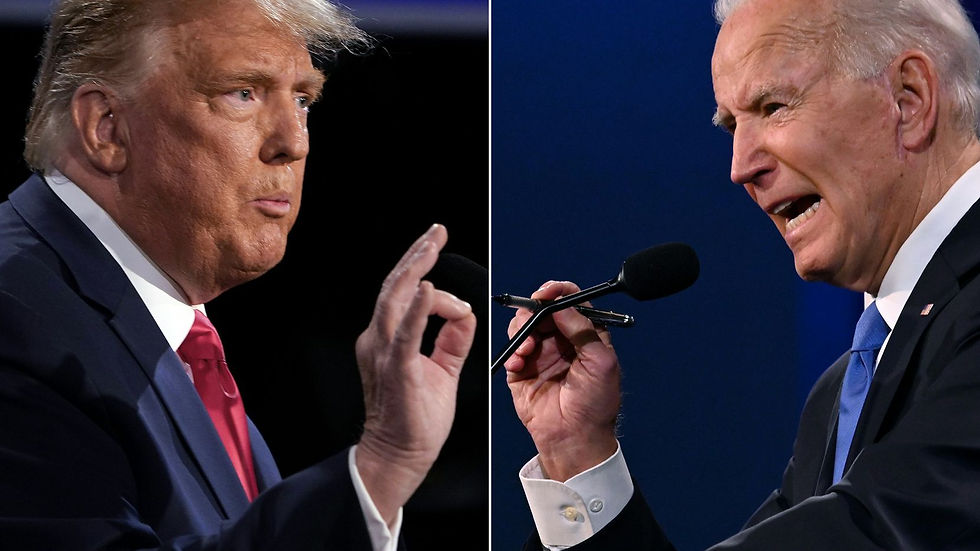The Political Pendulum: Realignment, Dealignment, and Party Coalitions.
- charlottenoeljones
- Nov 4, 2021
- 3 min read

A party coalition is a fusion of two or more political parties or groups of people. When parties or people form coalitions, there is a strategic reason. Typically, smaller groups with similar goals will merge together to have a better chance winning election. A famous coalition in American politics is Roosevelt's New Deal Coalition. This coalition was made up of northern white ethnic voters, white southern voters, norther white working-class voters, and support from many African-Americans. Roosevelt's appeal to these groups gave the democratic party massive power in politics. In fact, for the next 50 years the democratic party dominated the U.S. Senate and for the next 40 years they dominated the House of Representatives (Abramowitz, 2018). Since the New Deal Coalition, party coalitions have been a go-to strategy for the modern democratic and republican party. This blog post will give a short synapsis of realignment, dealignment, and party coalitions, as well as the modern state of the democratic and republican party.
By the late 1980s, the New Deal Coalition was falling apart and the democratic party had been losing power since the 1960s. The early 1970s and the late 1980s were a period of dealignment in the United States. Essentially, dealignment is where voters abandon their party, but do not join or form a new one. In this time, 25% of voters split their tickets in presidential and House elections. Public disengagement with politics had something to do with the divided government control. For most of this time, the Republicans controlled the Presidency but not the congress (Abramowitz, 2018).

Realignment for the republican party was brought upon by Newt Gingrich who defined a specific set of goals the Republican party needed to focus on and wrote books influential in the republican party like 'Language: A Key Mechanism of Control'. Since the 1980s, the republican party has become increasingly authoritarian, and has treated politics, as Newt Gingrich himself describes it, like a 'war for power' (Coppins, 2018). Most of the influx in republican party identification came from white Christian voters. Because of this specific demographic, the republican party has kept supporting ideas that will keep their voter's loyalty, while alienating non-white, female, non-protestant, and LGBTQ voters (Abramowitz, 2018).
Many political scientists are saying the United States is heading for dealignment, and recent elections have proved this right. First, let's examine the democratic coalition. The 2020 election showed the democratic party is changing into an 'up-stairs down-stairs- coalition', made up of moderate and far-left voters. The moderates who voted democratic in the 2020 elections did not vote blue because they supported Biden, but because they did not like Trump. However, the huge support from suburban moderate voters helped carry the democrats. Now, to keep this support, democrats have to walk a line between keeping far-left voters happy and moderate voters happy (Edsall, 2020).

Moreover, Republicans are trying to 'marry the Party of Regan with the Party of Trump', as Jim Banks puts it. Republicans are trying to merge old values like small government, limited state spending, and national debt with new values championed by Trump like fighting Big Tech and cracking down on 'Fake News' (Scherer & Dawsey, 2021).
Edsall, T. B. (2020, December 2). Honestly, This Was a Weird Election. The New York Times. https://www.nytimes.com/2020/12/02/opinion/biden-trump-moderates-progressives.html
Scherer, M., & Dawsey, J. (2021, May 23). Republicans struggle to define a new governing coalition as Trump closes grip on party. The Washington Post. https://www.washingtonpost.com/politics/republicans-struggle-to-define-a-new-governing-coalition-as-trump-closes-grip-on-party/2021/05/23/07bce926-b98a-11eb-96b9-e949d5397de9_story.html
Coppins, M. (2018, October 15). How Newt Gingrich destroyed American politics. The Atlantic. https://www.theatlantic.com/magazine/archive/2018/11/newt-gingrich-says-youre-welcome/570832/
Abramowitz, A. I. (2018). The great alignment: Race, party transformation, and the rise of Donald Trump. Yale University Press. Chapter 2 and Chapter 3



Comments